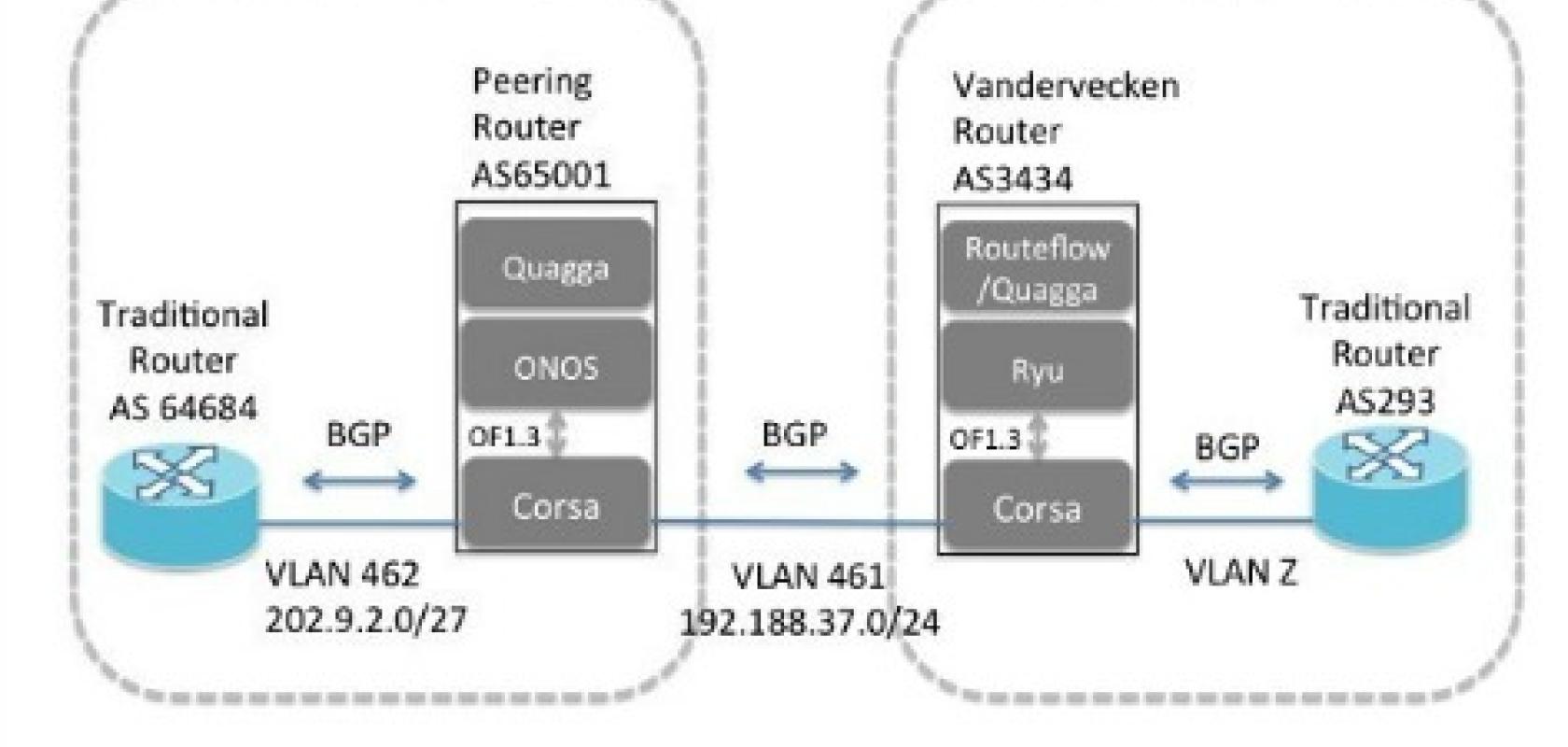Partners in the Open Networking Operating System (ONOS) project have successfully deployed a router based on open source software in Australia and used it to exchange information with another router located in the US.
The trial represents an important milestone because it shows that software-defined networking (SDN) based routing can work on a global scale, says Dan Pitt, executive director of the Open Networking Foundation (ONF).
David Wilde, network architect for AARNet, Australia’s research network, commented: “Much of the focus in SDN until now has been on networking within the data centre, so it's an important step forward to see this work across a wide-area network.”
The SDN-based peering router, developed by ONF and the ONOS Project, is a free, open-source application built on ONOS and currently available for download from the ONOS Project website. It enables SDN-based IP networks to interact with other networks, whether SDN-based or traditional (non-SDN), by peering with one another to advertise, collect and exchange routes using BGP. The peering application receives route advertisements from peers, resolves next hops and then programs the routing tables in the OpenFlow-based switch through ONOS.
On the Australian side, the ONOS-based router was set up by the Australian Academic Research Network (AARNet) and the Commonwealth Scientific and Industrial Research Organisation (CSIRO), and deployed across two sites in Sydney, Australia. OpenFlow switches supplied by Corsa Technology are located in an AARNet data centre in Haymarket, while the ONOS application, which controls the Corsa DP6410 data plane, runs in a CSIRO research laboratory in Marsfield, approximately 15km away.
AARNet also provided the trans-Pacific connection to the US Department of Energy's research Energy Sciences Network, ESnet, site in Berkeley, California, which hosts a Vandervecken router (see figure). This is a complementary open source router based on technology developed under Google’s RouteFlow project. The ESnet site also uses Corsa hardware.
The two SDN-based routers have been exchanging data for more than a month. In the trial, the production ESnet (AS293) router advertises 15,000 routes comprising research and education networks to the Vandervecken router, which in turn advertises these to the peering router in Sydney, Australia. In addition to successfully peering with the Vandervecken router, the ONOS-based router also peers with a traditional router in a private AS within AARNet/CSIRO.
“This operation has been up and running for over a month now, so there is no longer a question of whether SDN control planes can be deployed to support worldwide infrastructure,” claimed Bill Snow, vice president of Engineering at ON.Lab.
He added: “With ONOS' support for high availability, scale and performance and with Corsa's high-performance, programmable data plane, the promise of SDN is turning into reality. An SDN control plane that readily interoperates with existing infrastructure, whether traditional or software-defined, is the key to providing a migration path from legacy systems as well as a roadmap to pure SDN infrastructure.”
Adaptive and scalable controllers like ONOS will allow carriers to developer real-world applications for OpenFlow-based software-defined networks and are critical to the adoption of SDN, the partners say. ONOS isn’t the only game in town when it comes to SDN controllers, but it has been designed from the outset to handle services at the scale that carriers need in their wide area networks.
Nevertheless, the main technical challenge in scaling up the concept, according to ON.Lab, was to programme the data plane with large forwarding tables. The routers successfully exchanged 15,000 routes in this deployment - reflecting true Internet scale - and 100,000 routes have been programmed in lab tests, the organisation says.
Corsa also notes that its high-performance OpenFlow v1.3+ capable hardware was an important part of growing the network to “Internet scale”, by bringing multi-table processing power and 100G line speeds to the data plane.
No doubt this is just the beginning of what can be achieved. On the Australian side of the network, there are plans to build a test bed to develop SDN applications further. AARNet and CSIRO are currently collaborating in an Australian government funded initiative with nine Australian universities to build an ONOS-based SDN test-bed to demonstrate the real value of SDN to Australian companies and accelerate its uptake, according to CSIRO research engineer Craig Russell.


